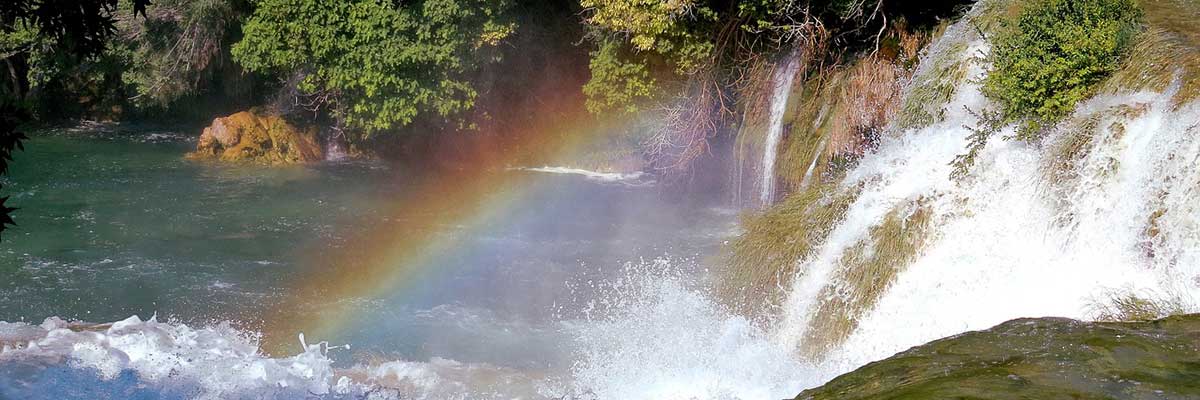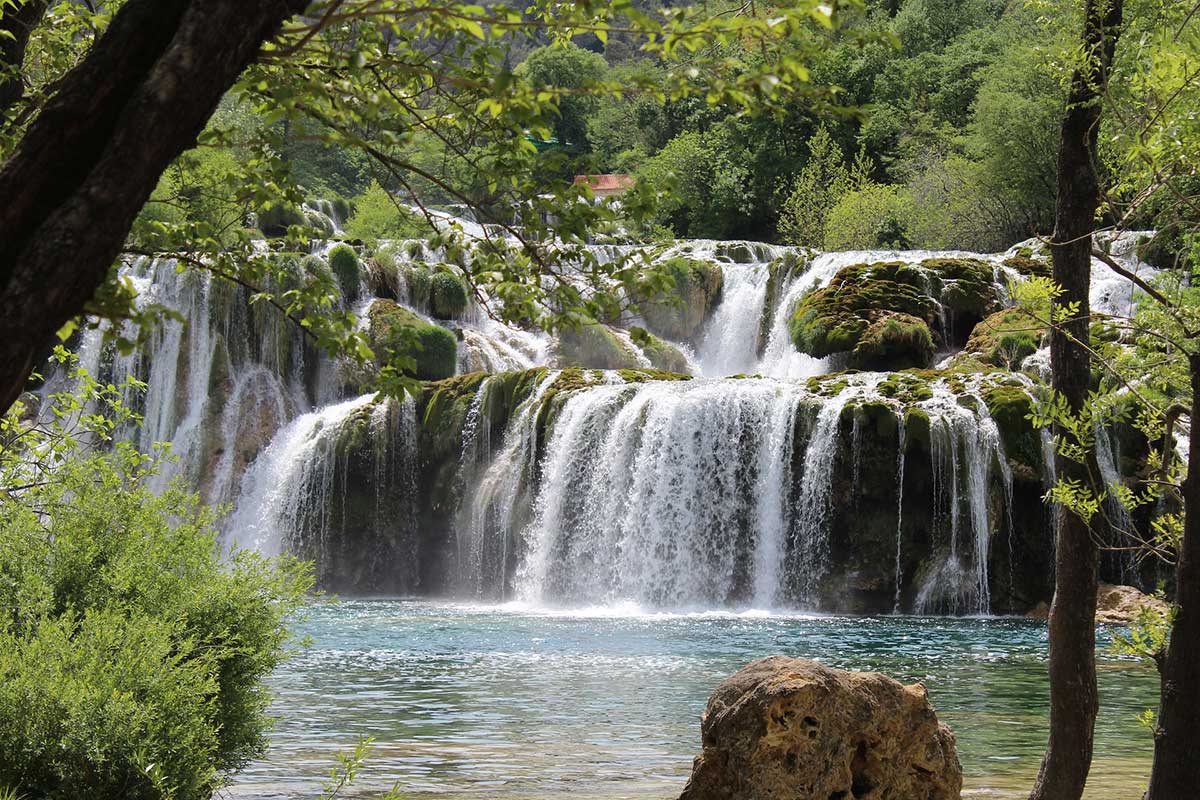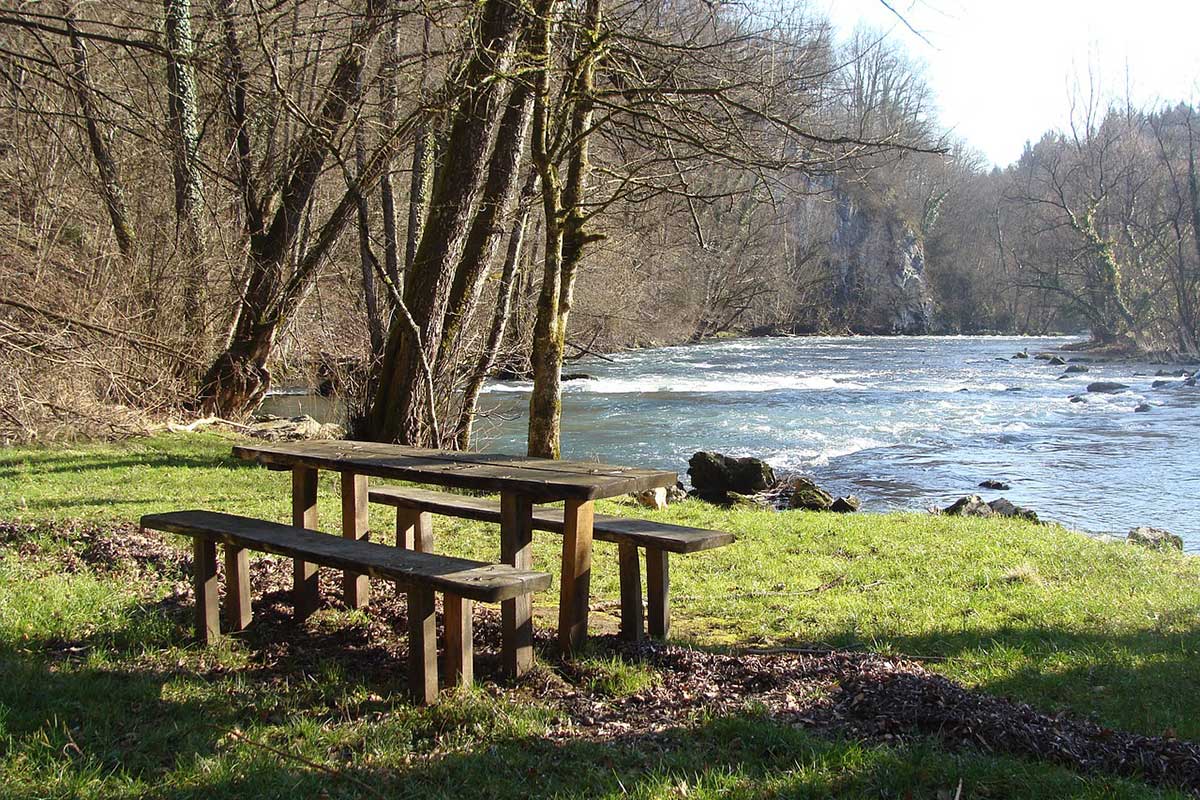
Discover the river Krka with us, on our Krka tour from Omis, and its national park- truly remarkable natural and karst phenomenon.
River Krka today has 7 sedrenic waterfalls whose beauties represent a natural karst phenomenon and was proclaimed as National Park in 1985. The most impressive waterfalls are Skradinski buk and Roški slap.
Skradinski buk is one of the most beautiful sloping waterfalls in Europe and it offers a true experience of natural beauty. Once it was a milling settlement at which the rushing waters of the Krka were harnessed to power a variety of machines. Some of the stone mill buildings have been restored, and visitors can see working examples of flour and fulling mills, alongside displays of traditional costumes and agricultural implements.
Waterfalls, lakes, old mills, wooden bridges and intertwined hiking trails are an integral part of this unique space. Discover Krka by walking through the well-groomed bridges along the mills, familiarize yourself with an ethnological collection and look at old crafts with mills.
The waterfalls of Krka National Park are a phenomenon that took millions of years to create. The strong current of the river (which cuts through the park) slowly carved through the limestone hills and created a canyon 200m deep. Moss and algae then retained the limestone’s calcium carbonate, forming barriers and creating magical waterfalls that gracefully tip-toe their way deeper and deeper through the canyon.
The Krka river is rich in fish with 17 different fish species including a species of trout that can only be found here. Marsh birds find it an appealing habitat and depending on the season, you may find heron, duck, goose, crane, sandpiper, snipe, water rail and warblers. In the gorges there are rare eagles, falcons and owls.
The rocky sides of the valley play host to various communities of bats, who play an important role in eating mosquitoes and other irritating waterside insects. It’s also an area rich in historical resonances, with ruins of fortresses recalling the region’s erstwhile status as a disputed borderland between warring empires, and waterside monasteries providing evidence of a rich spiritual culture.
When sunny days begin in Croatia, every day is a good day to put on your sun cream, carry your hat with you and of course- a pair of sun glasses (people in Dalmatia are widely known for wearing their sun glasses every day through the whole year). Don’t forget to bring your swimming suits and towels since swimming in part of Krka national park is allowed and it would be a pity to miss such unique experience. Also, for leisurely walking you should bring comfortable shoes and comfortable clothes, as well as clothes for change if needed afterwards.
Since it can get chilly by the water, it would be good to bring some warm clothes, just in case.
In this stunningly beautiful part of Croatia you’ll simply have a wonderful day.









